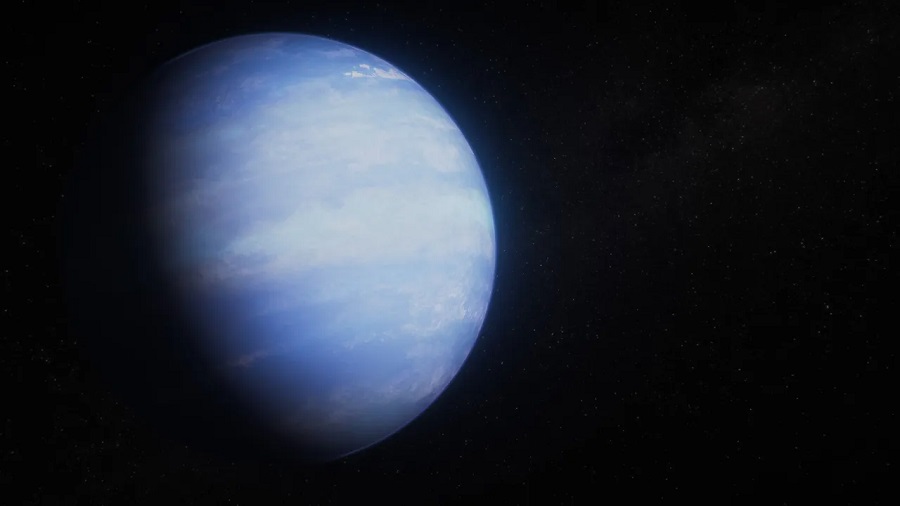Exoplanet WASP-107 b: Why So Puffy?
Thanks to the James Webb Space Telescope’s super-sensitive instruments, scientists can now measure a wide range of molecules in exoplanet atmospheres.

Have you ever wondered why the exoplanet WASP-107 b is so puffy? Well, you’re not alone. Two independent teams of researchers have cracked the case using data from NASA’s James Webb Space Telescope, along with earlier observations from the Hubble Space Telescope.
What’s Up with WASP-107 b?
Imagine a planet that’s more than three-quarters the size of Jupiter but with less than one-tenth its mass. That’s WASP-107 b, a so-called “warm Neptune.”
It’s one of the least dense planets known, and it’s got scientists scratching their heads.
Most puffy planets are hotter and more massive, making them easier to explain. But WASP-107 b? It’s in a league of its own.
Methane Mystery
The key to understanding WASP-107 b’s puffiness lies in its atmosphere—or rather, what’s missing from it. The planet shows surprisingly little methane (CH4).
This hints that the planet’s interior must be hotter and its core much heftier than we previously thought.
Tidal Heating: The Planet’s Personal Trainer
So, what’s heating up WASP-107 b? The answer might be tidal heating. This planet has a slightly non-circular orbit, causing its gravitational pull to change as it moves.
The constant stretching and squeezing heats the planet from the inside, keeping it puffed up without needing any wild formation theories.
A New Way to Estimate Core Size
Thanks to the James Webb Space Telescope’s super-sensitive instruments, scientists can now measure a wide range of molecules in exoplanet atmospheres.
Combining observations from Webb and Hubble, researchers have built detailed spectra of WASP-107 b’s atmosphere. This data shows a surprising lack of methane, suggesting that hot gas from deep inside the planet is mixing with the cooler upper layers.
Knowing how much energy is inside the planet and understanding the mix of elements, scientists can estimate the core size.
It turns out that WASP-107 b’s core is at least twice as massive as previously thought, making more sense in terms of planet formation.
WASP-107 b: Not So Mysterious After All
All this new information shows that WASP-107 b isn’t as strange as we once thought. It didn’t need to form with a tiny core and a huge gas envelope.
Instead, it might have started out more like Neptune, with a lot of rock and a moderate amount of gas. Just heat it up, and voila, you get the puffy planet we see today.
The Future of Exoplanet Exploration
This discovery is just the tip of the iceberg for the James Webb Space Telescope, which is set to uncover more mysteries in our solar system and beyond.
As an international program led by NASA with partners ESA (European Space Agency) and CSA (Canadian Space Agency), Webb is revolutionizing our understanding of the universe and our place in it.
So next time you think about puffy planets, remember WASP-107 b and the incredible science that’s revealing its secrets.









